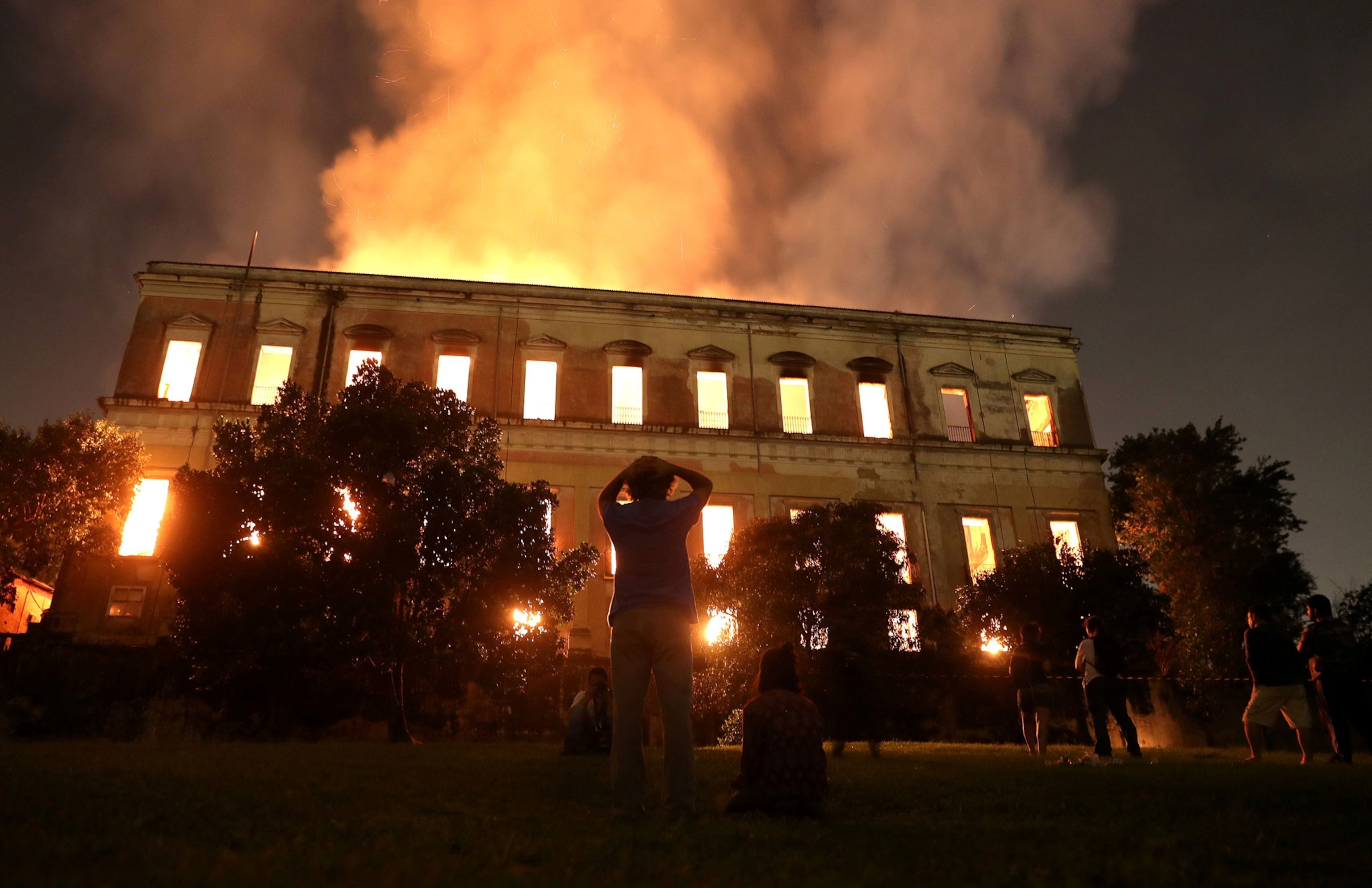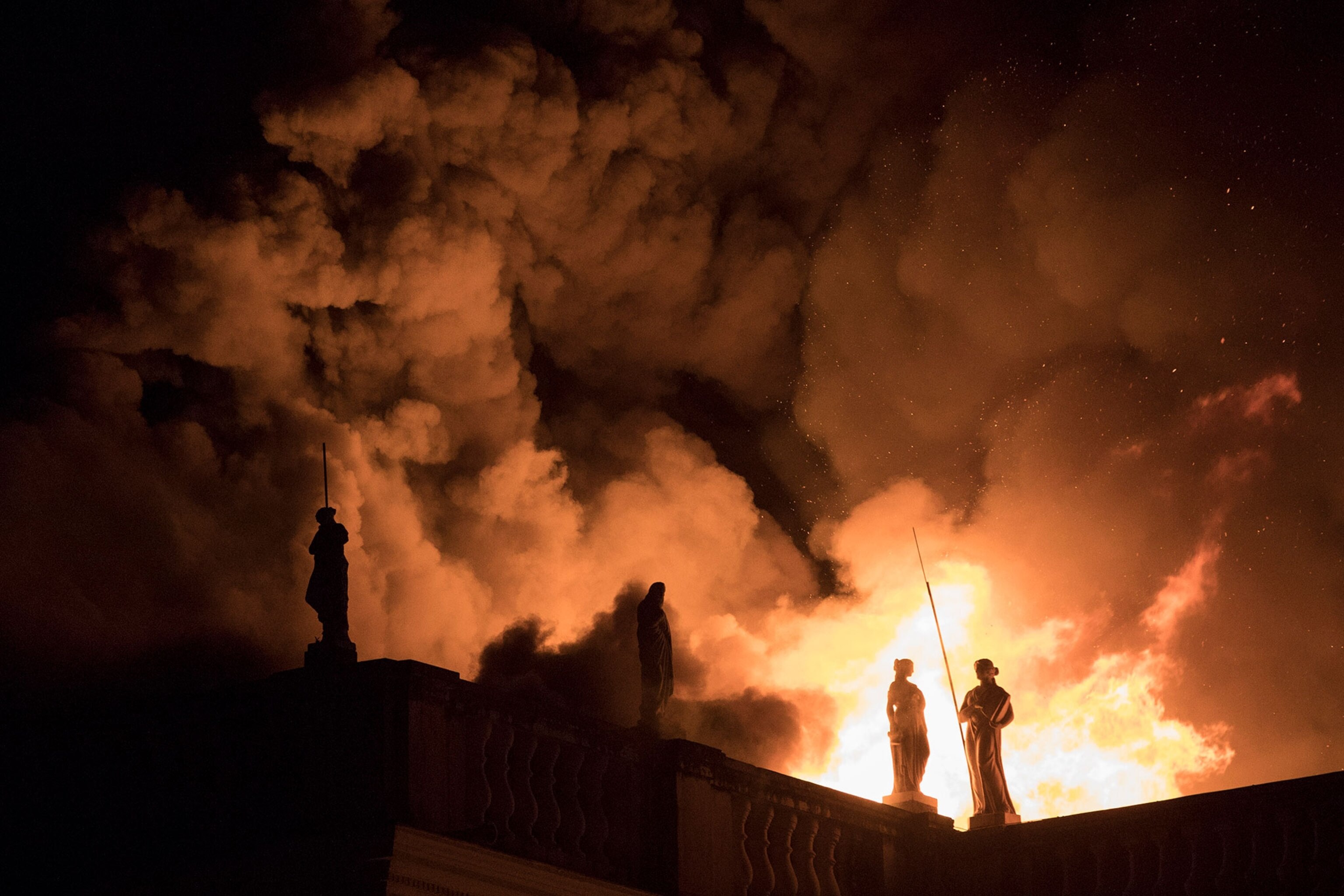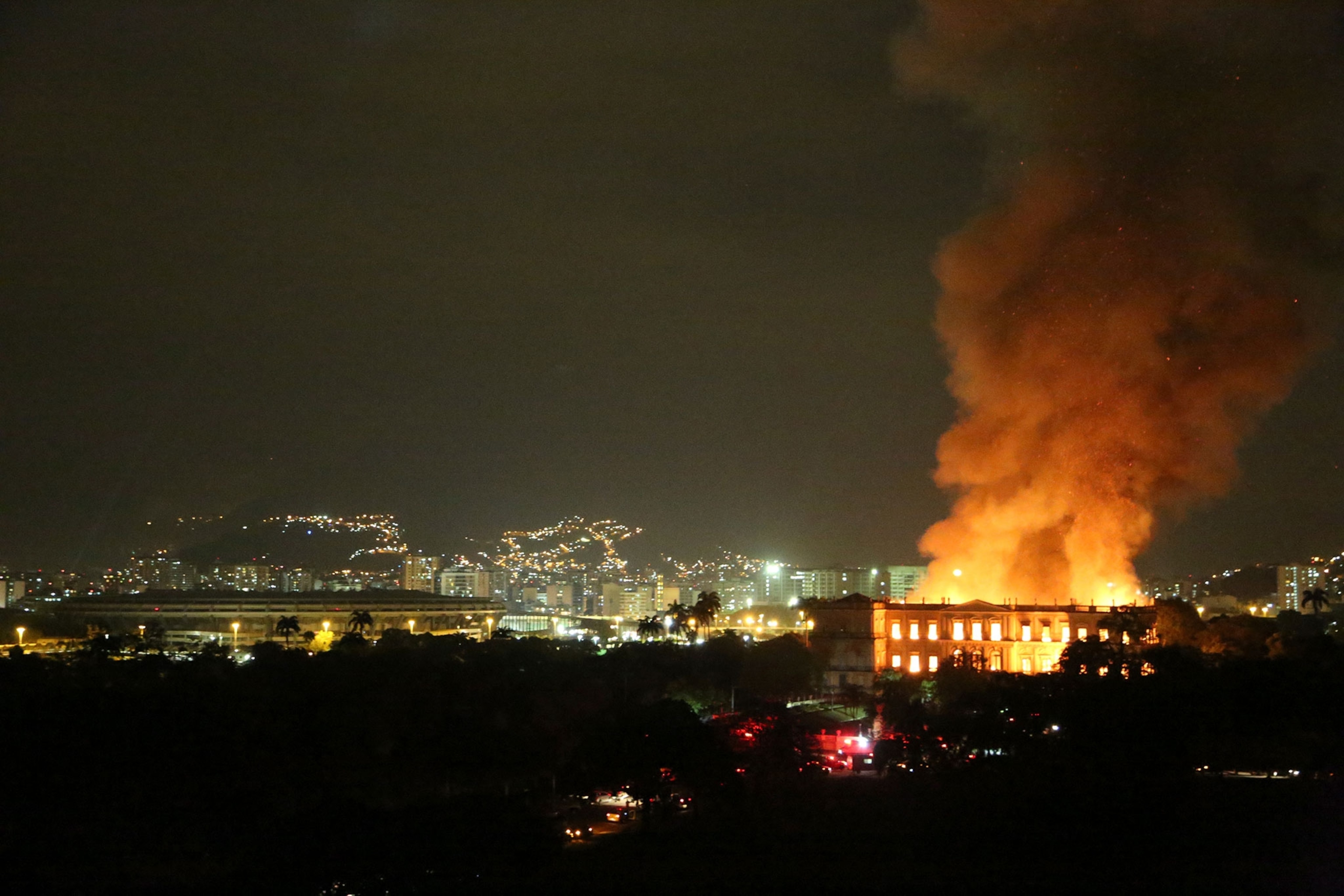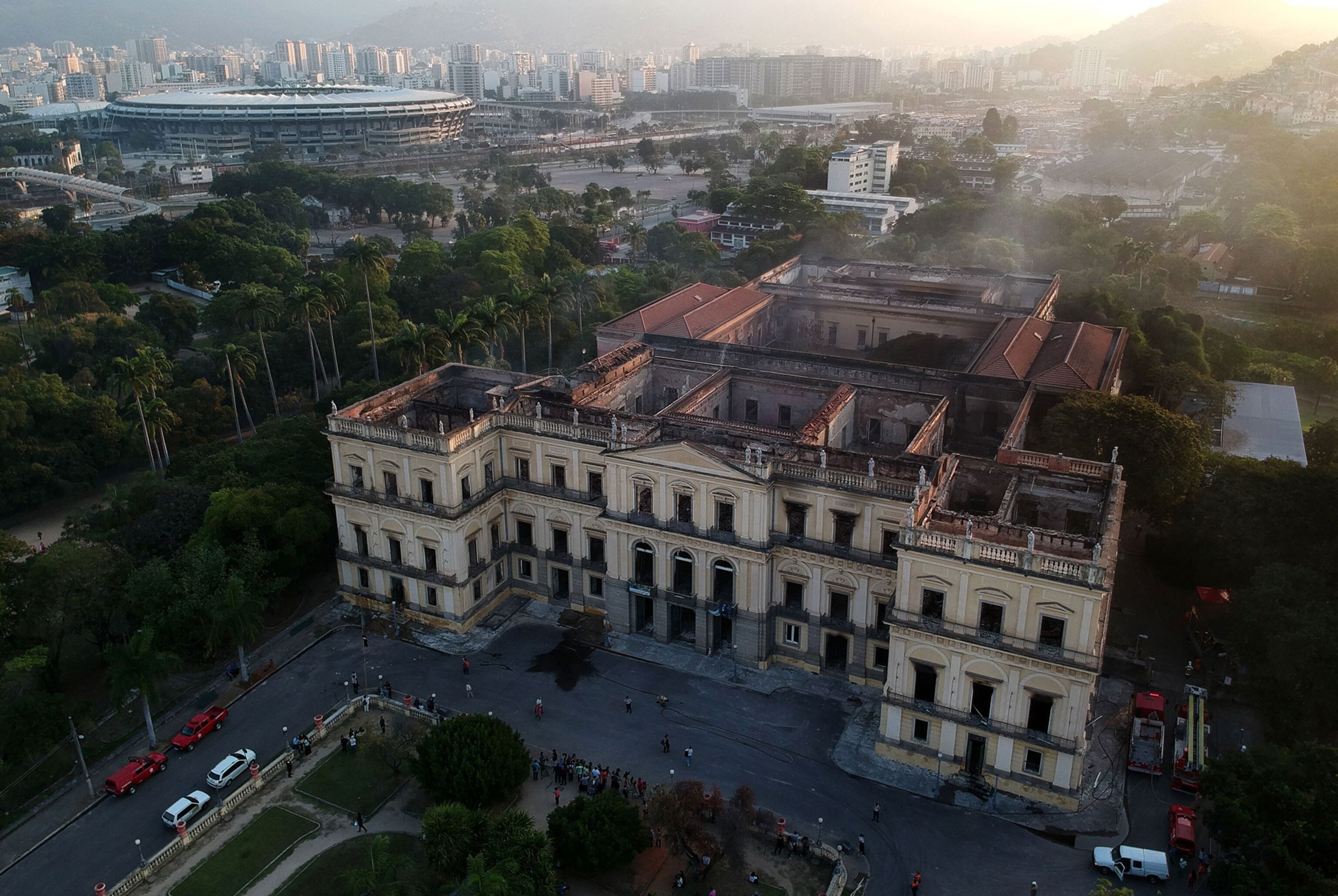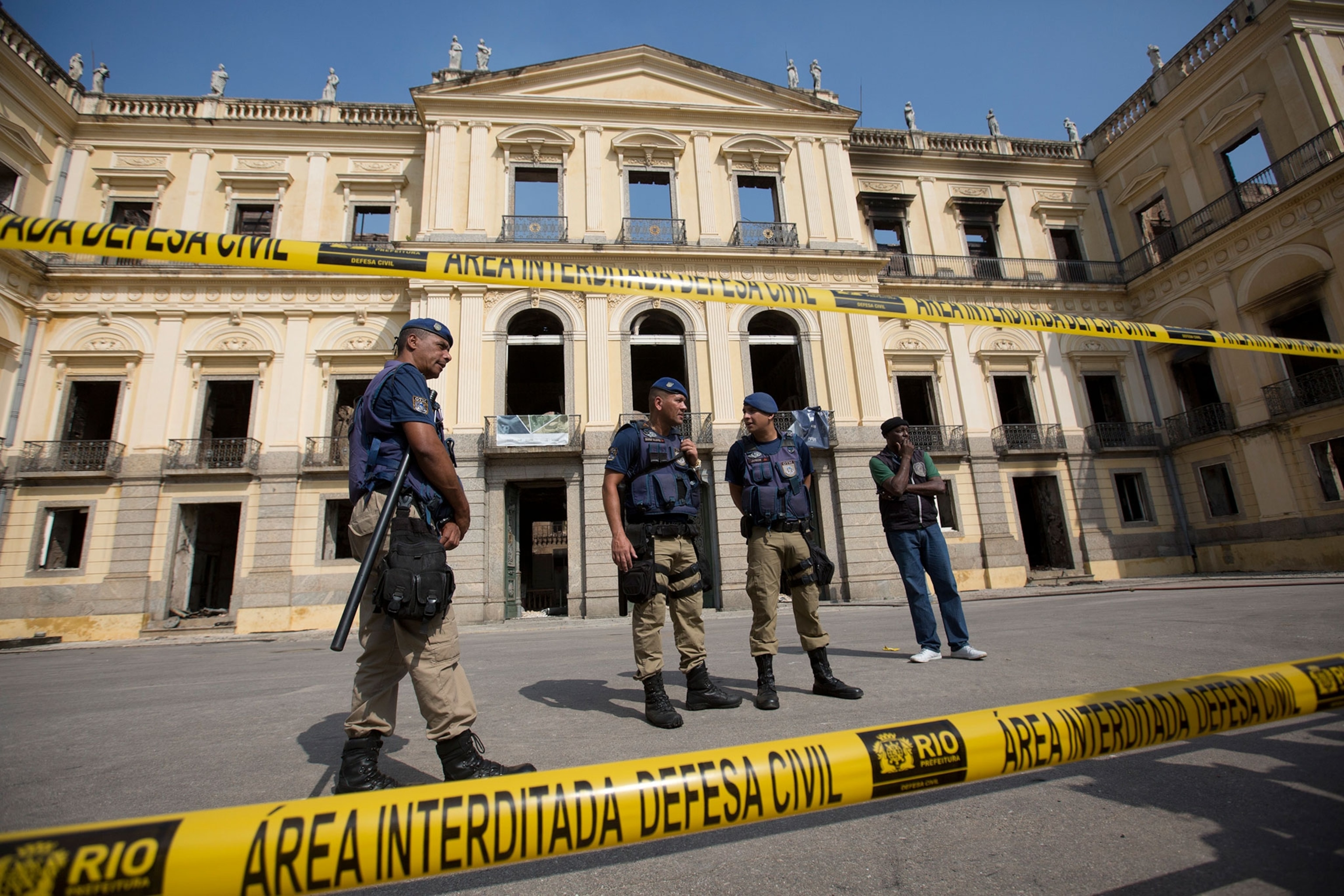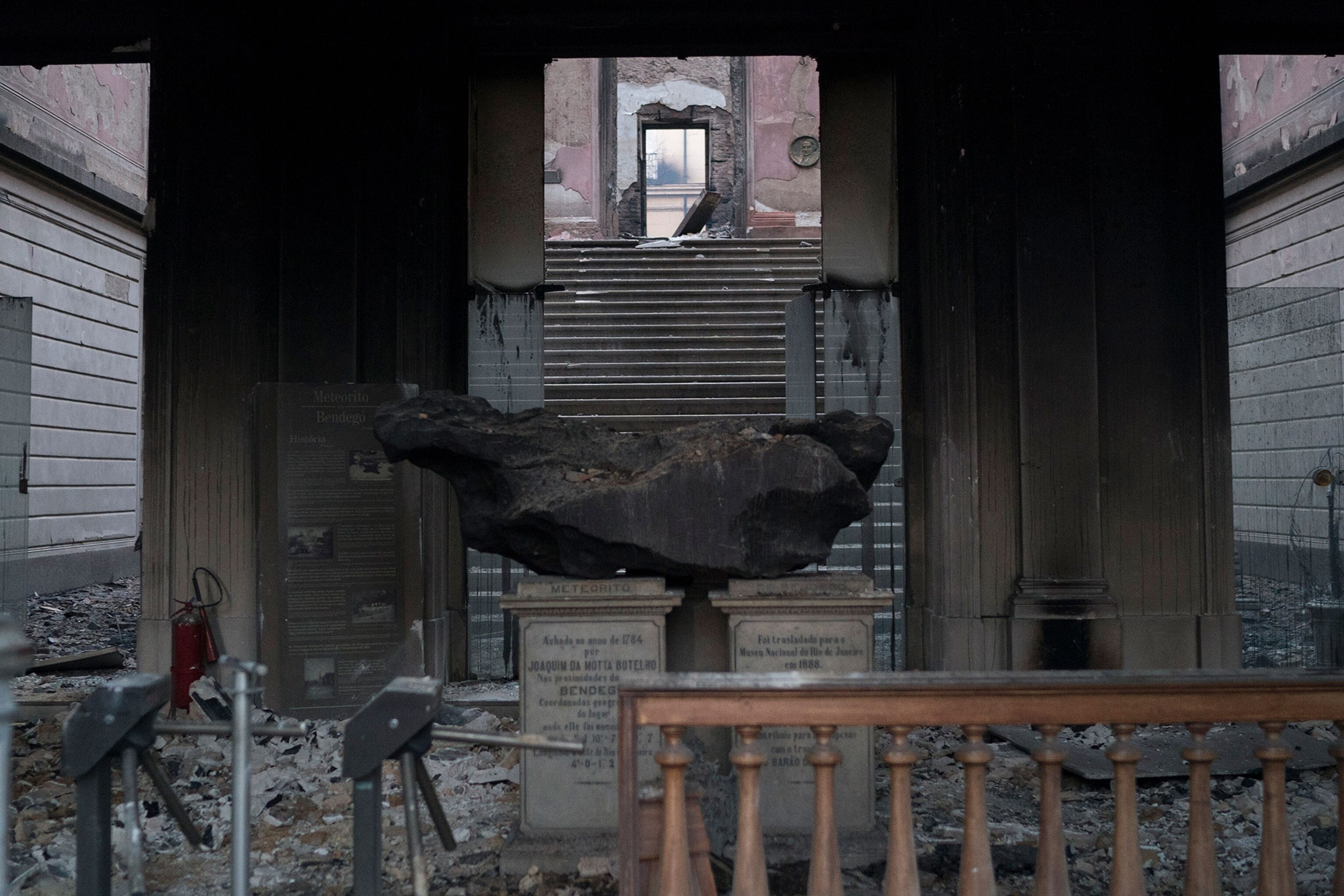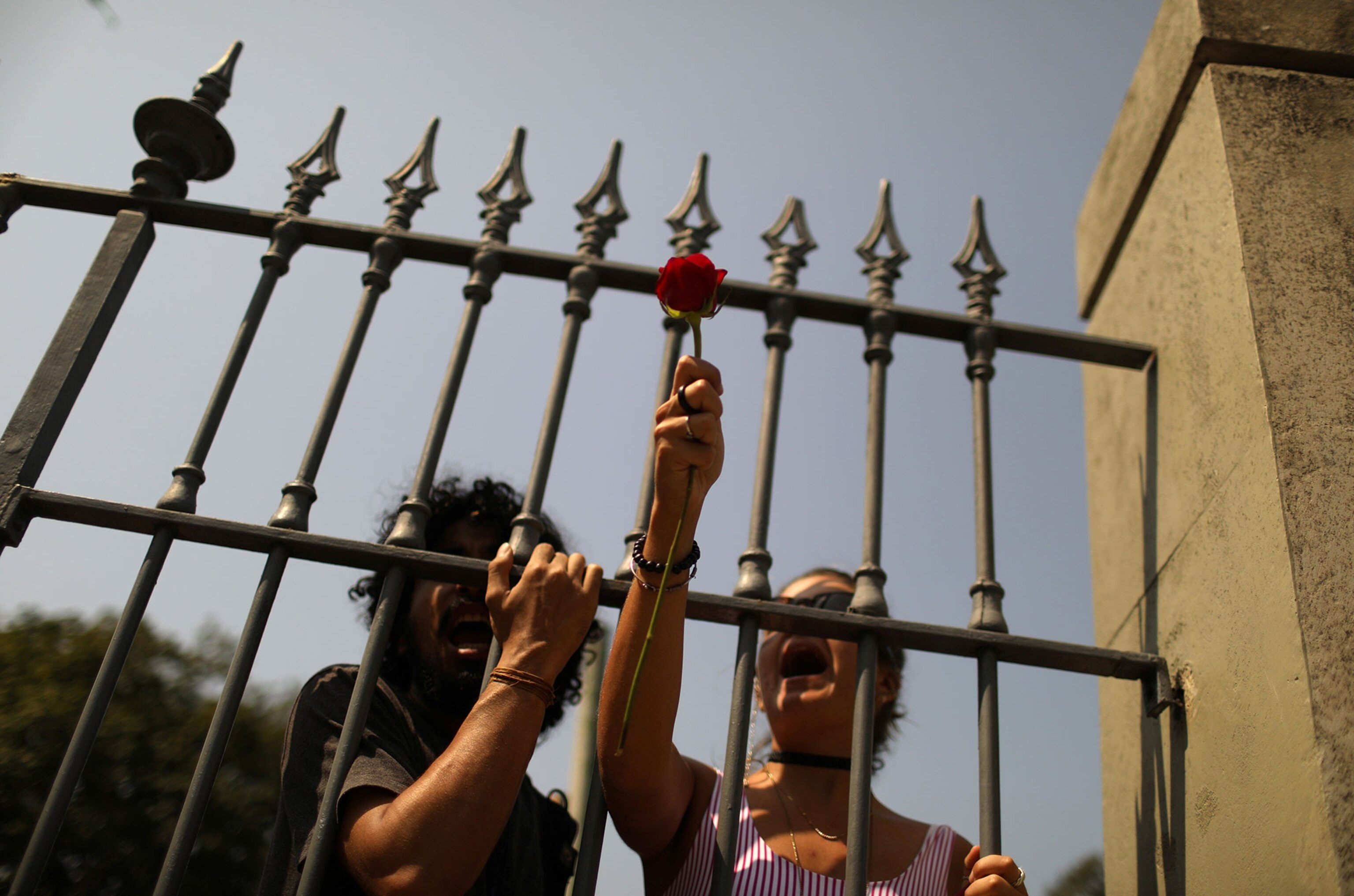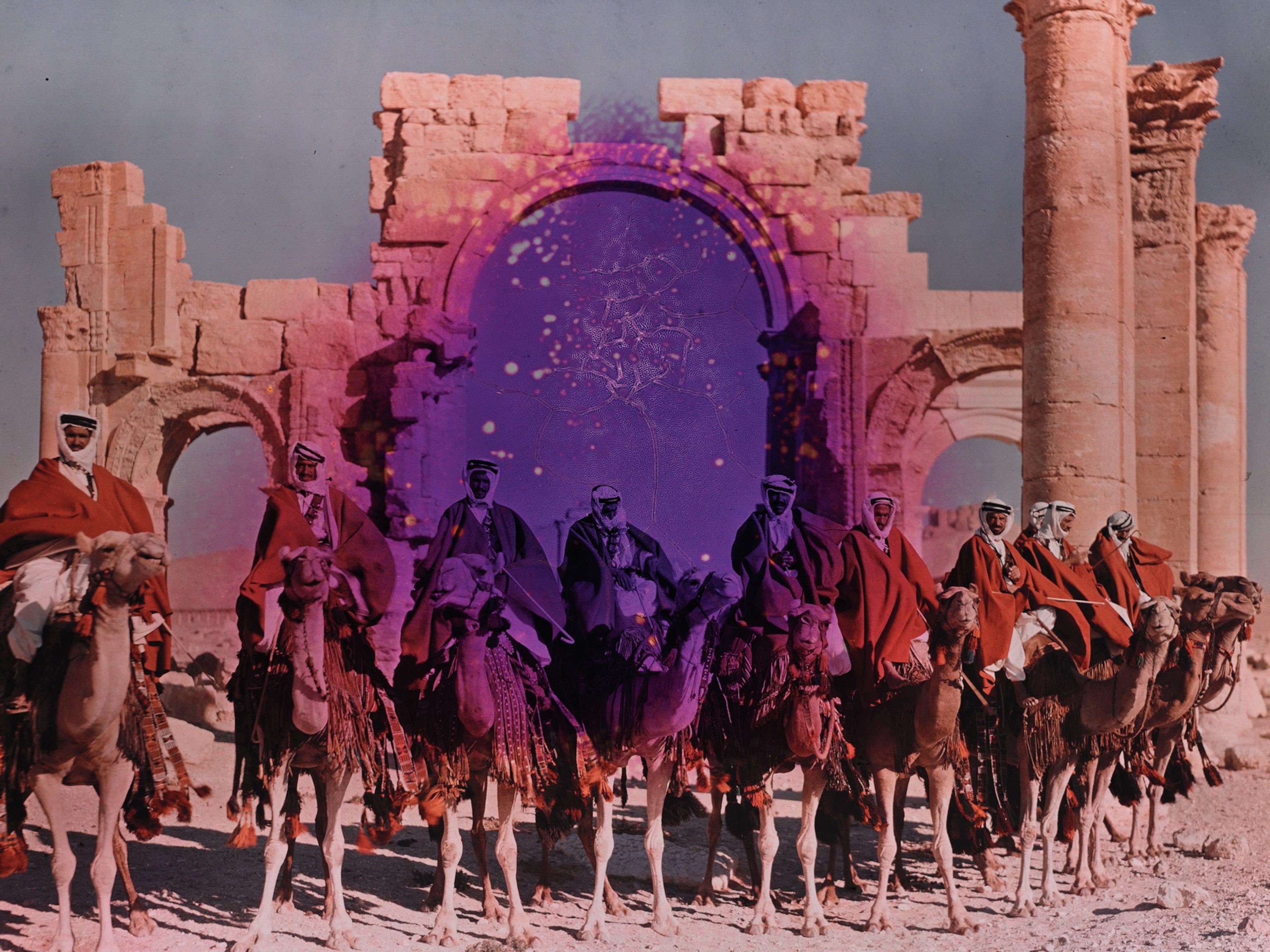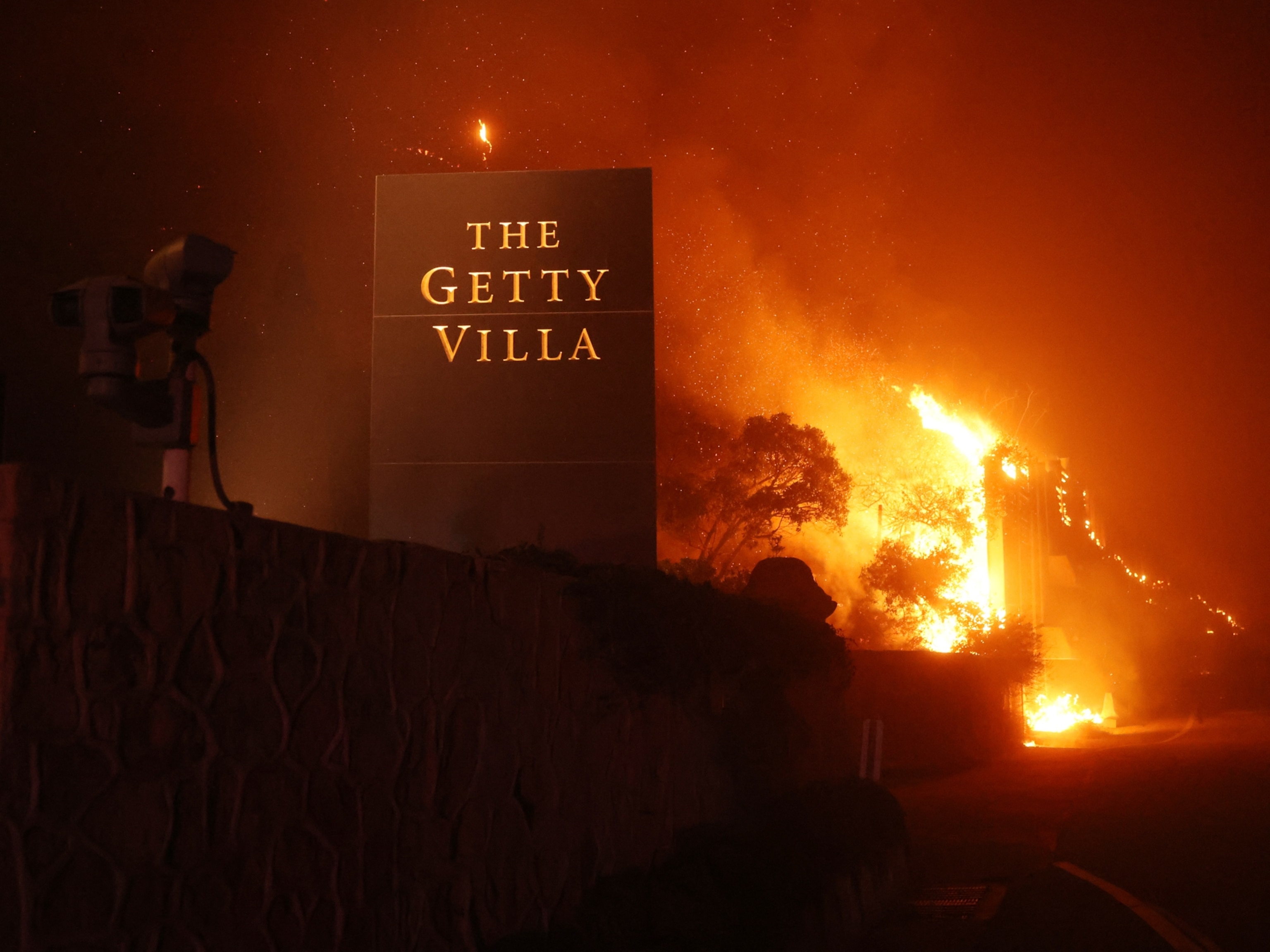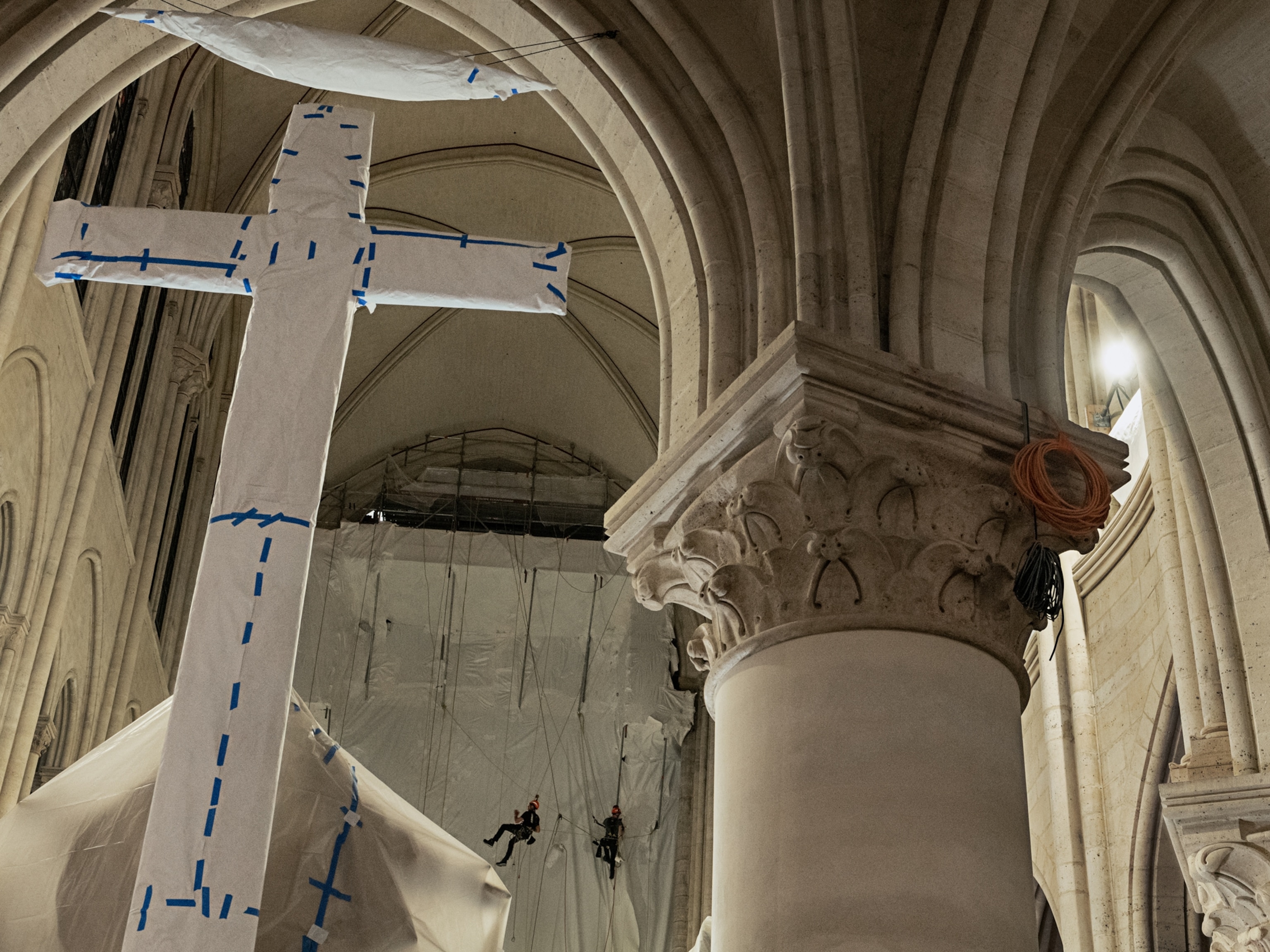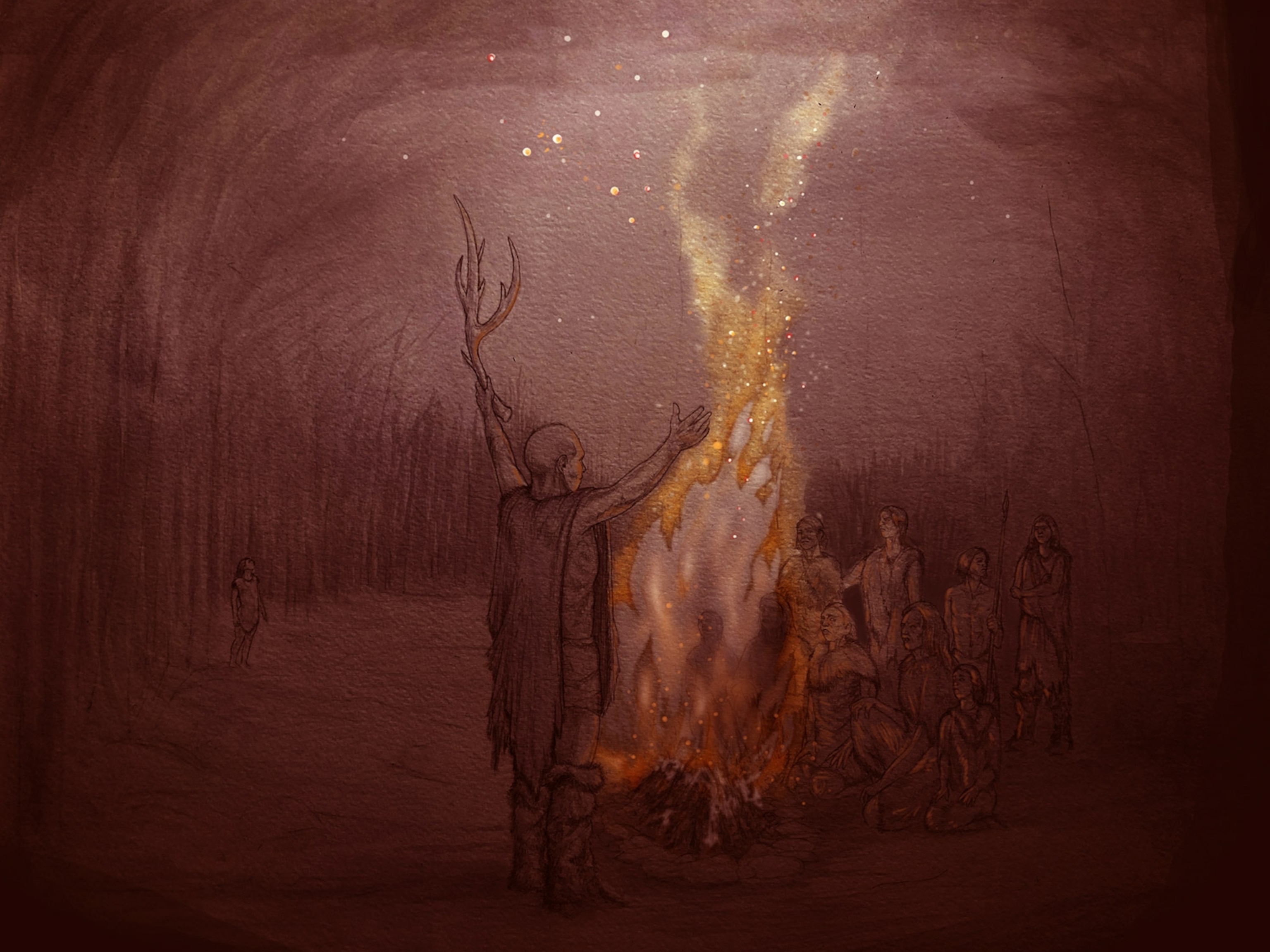Grief and Anger Mingle After Devastating Brazil Museum Fire
“The importance of the collections that were lost couldn't be overstated.”
For more than 200 years, Brazil's National Museum—or Museu Nacional—stood as the country's oldest and most important safeguard for its heritage. Now, one of Latin America's largest natural history museums is a burnt-out husk of its former self. A massive fire broke out at the museum late September 2, torching its exhibits and some 90 percent of the museum's 20 million artifacts. There were no reported fatalities.
As firefighters worked to put out the blaze, some museum staffers and volunteers pulled what they could from the building, including part of the museum's mollusk collection. The museum's Bendegó meteorite, the largest ever found in Brazil, is one of the few objects that survived direct contact with the flames. Scientists also hold out hope that some of the objects in the archaeology and paleontology collections may have been stored in metal containers that shielded them.
In an September 5 email, Museu Nacional curator Débora Pires wrote that the entomology and arachnology collections were completely destroyed, as was most of the mollusk collection. However, technicians had braved the fire to save 80 percent of the mollusk holotypes—the specimens that formally serve as the global references for a given species. The museum's vertebrate specimens, herbarium, and library were housed separately and survived the fire. And recently, researchers had 3-D scanned some of the museum's Egyptian artifacts, preserving at least their forms for posterity.
But most of the collection—the product of lifetimes' worth of scholarly work and exploration—is now likely lost, including rare fossils and audio recordings from indigenous peoples, some of languages that are no longer spoken by living tribes.
“The importance of the collections that were lost couldn't be overstated,” Luiz Rocha, a Brazilian ichthyologist who has studied the Museu Nacional's collections several times, told National Geographic in a previous interview. “They were unique as it gets: Many of them were irreplaceable, there's no way to put a monetary value on it.”
Scholars have sharply criticized the Brazilian government for the tragedy, which they say was preventable. Years of budget cuts and delayed renovations left the Museu Nacional with peeling walls and exposed electrical wiring. When firefighters arrived on the scene, the area's two fire hydrants were reportedly empty, forcing rescue crews to draw water from water trucks or a nearby lake.
Since news of the inferno broke Sunday, people and museums around the world have mourned the museum's loss. “On this dark day for not only Brazilian heritage but also for the world's heritage, we wish to reiterate our unshakeable belief in the resilience and professionalism of Brazil's museum professionals, and our faith in their ability to recover from this painful event,” the International Council of Museums said in a statement.
Debate already swirls around whether, or how, the Museu Nacional should be rebuilt. But in the meantime, local students have started work on a rebuilding project of their own.
“In the face of tonight's tragedy, the students of the museology course at UNIRIO [the Federal University for the State of Rio de Janeiro] are mobilizing to preserve the memory of the National Museum,” the Museu Nacional said in an email. “We ask everyone who possesses images (photographs/videos/even selfies) of the collection and exhibition spaces to share them with us.”
